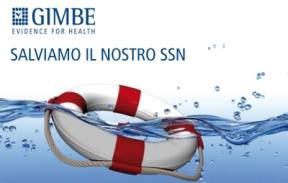All news by therapy
Hypertonic saline solution and cystic fibrosis: a useful therapy in preschool age
A very recent study has shown that early long-term use of hypertonic saline solution would have a "positive" effect on the structural alterations that the lungs of patients with Cystic Fibrosis undergo since childhood.

As known, genetic mutations in the CFTR (Cystic Fibrosis Transmembrane conductance Regulator transmembrane protein) gene determine the onset of Cystic Fibrosis (CF). In fact, due to its impaired functioning, there is an abnormal ionic transport in the respiratory epithelium, characterized by defective secretion of chlorides and excessive sodium absorption.
As consequence, this mechanism also involves excessive water absorption, making the mucous secretions of the airways "dehydrated". The result is the mucous-ciliary clearance system alteration, with the accumulation of dense mucous, fertile ground for bacterial proliferation and many recurrent infections, typical of CF.
Therefore, due to the discovery of this mechanism, since the 2000s 7% hypertonic saline solution has been chosen for the chronic treatment of these patients, first in adulthood, then in childhood.
Several studies, published in prestigious international journals, have already shown the beneficial effects of this treatment, including the rehydrating action on mucus, the "activating" effect on mucociliary clearance and the "modulating" action on inflammation, provided that daily and prolonged use.
However, a very recent paper published in “Lancet, Respiratory Medicine”, showed the results of the SHIP (Saline Hypertonic in Preschoolers) study, conducted internationally by specialized centres on children aged 3 to 6 years, affected by CF, treated daily with 7% hypertonic saline by inhalation for 48 weeks, compared with a control group treated with 0.9% isotonic solution.
The primary outcome of the study was to estimate the difference between the two groups in the percentage of total lung volume occupied by abnormal airways (PRAGMA-CF% Disease) measured by chest CT at 48 weeks. This parameter was significantly lower in CF subjects treated with hypertonic saline than in another group of CF patients undergoing therapy with 0.9% isotonic solution.
Bibliography
Donaldson SH, Danielle Samulski T, LaFave C, et al. A four week trial of hypertonic saline in children with mild cystic fibrosis lung disease: Effect on mucociliary clearance and clinical outcomes. J Cyst Fibros. 2020 Nov;19(6):942-948. doi: 10.1016/j.jcf.2020.07.009.
Elkins M, Dentice R. Timing of hypertonic saline inhalation for cystic fibrosis. Cochrane Database of Systematic Reviews 2020, Issue 2. Art. No.: CD008816. doi: 10.1002/14651858.CD008816.pub4.
Tiddens HAWM, Chen Y, Andrinopoulou ER et al.; SHIP-CT Study Group. The effect of inhaled hypertonic saline on lung structure in children aged 3-6 years with cystic fibrosis (SHIP-CT): a multicentre, randomised, double-blind, controlled trial. S Lancet Respir Med. 2022 Mar 11:S2213-2600(21)00546-4. doi: 10.1016/S2213-2600(21)00546-4






